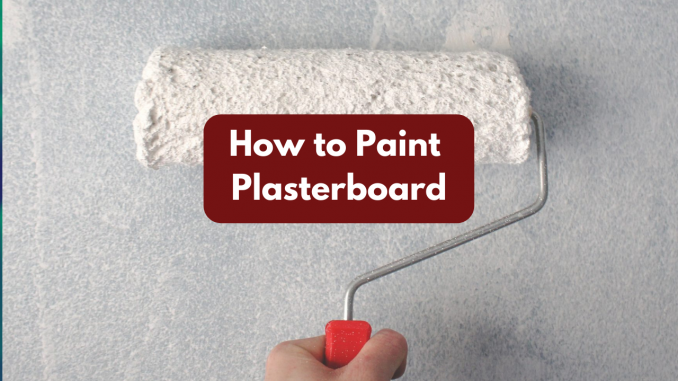
Yes, you can paint straight onto plasterboard. It is an excellent way to transform the appearance of a room. Whether you’re adding a fresh coat of paint to newly installed plasterboard or updating the colour of existing walls, it’s a straightforward process that can yield impressive results.
In this step-by-step guide, we will break down the process of painting plasterboard into simple and easy-to-follow paragraphs, allowing even beginners to achieve a professional-looking finish.
Painting Plasterboard
Before you begin painting, it’s crucial to prepare the plasterboard properly. Start by cleaning the walls using a damp cloth to remove any dust or debris. Fill any cracks, holes, or imperfections with a suitable filler, and allow it to dry completely. Once dry, sand the filled areas gently until smooth. This preparation ensures a smooth and flawless paint application.
Protect Surrounding Surfaces
To avoid accidental paint splatters or drips, it’s essential to protect the surrounding surfaces. Cover the floor with a drop cloth and use painter’s tape to mask off any edges, trim, or adjacent walls. This will prevent the paint from spreading to unwanted areas and make clean-up much easier.
Prime the Plasterboard
Before applying the final paint coats, it’s advisable to prime the plasterboard. Primer creates a smooth and even surface, improves paint adhesion, and enhances the durability of the finish. Apply the primer with a roller or brush, following the manufacturer’s instructions, and allow it to dry completely.
Choose the Right Paint
Selecting the appropriate paint is crucial for achieving a beautiful and long-lasting finish on plasterboard, depending on the size of the plasterboard. Opt for a high-quality, interior latex paint that is specifically designed for walls. Consider the desired colou
r and finish (e.g., matte, satin, or gloss) to achieve the desired aesthetic. Ensure you have enough paint to cover the entire surface without leaving streaks or patches.
Apply the Paint
Once the primer has dried, it’s time to apply the paint. Start by cutting in along the edges with a brush, ensuring a neat and precise line where the walls meet the ceiling, corners, and trim. Then, use a roller to cover the larger areas. Apply the paint in even, overlapping strokes to achieve a consistent finish. Allow the first coat to dry completely before applying additional coats, as recommended by the paint manufacturer.
Finishing Touches
After applying the necessary number of coats and allowing ample drying time between each coat, inspect the painted plasterboard for any touch-ups required. Use a small brush to fix any imperfections or areas that may need extra coverage. Once satisfied with the overall finish, carefully remove the painter’s tape and drop cloth.
Painting plasterboard doesn’t have to be a daunting task. By following these step-by-step instructions, you can confidently transform your walls with a fresh coat of paint. Remember to prepare the plasterboard properly, protect the surrounding surfaces, prime the walls, choose the right paint, apply it evenly, and make any necessary touch-ups.
With patience and attention to detail, you’ll achieve a professional-looking finish that enhances the beauty of your space. So, gather your supplies, put on your painting clothes, and let your creativity flow as you bring new life to your plasterboard walls!
Frequently asked questions about painting plasterboard
Can I paint plasterboard without priming it?
While it’s not mandatory, priming plasterboard before painting is highly recommended. Primer helps create a smooth surface, improves paint adhesion, and enhances the durability of the finish.
What type of paint should I use for painting plasterboard?
For painting plasterboard, it’s best to choose a high-quality interior latex paint specifically designed for walls. Consider factors such as colour, finish (matte, satin, gloss), and ensure you have enough paint to cover the entire surface evenly.
How many coats of paint should I apply to plasterboard?
The number of paint coats needed depends on the desired colour intensity and the quality of the paint. In most cases, applying two coats of paint should be sufficient. However, always follow the manufacturer’s instructions for the specific paint you’re using.
How do I prevent paint splatters or drips on adjacent surfaces?
To protect surrounding surfaces, use painter’s tape to mask off edges, trim, and adjacent walls. Additionally, cover the floor with a drop cloth to catch any accidental drips or splatters. This will make the clean-up process much easier.
Can I paint over existing paint on plasterboard?
Yes, you can paint over existing paint on plasterboard. However, it’s essential to ensure the existing paint is in good condition, clean, and free from peeling or flaking. Lightly sand the surface to create a better bond for the new paint, and consider applying a primer for better adhesion and a more even finish.

Leave a Reply